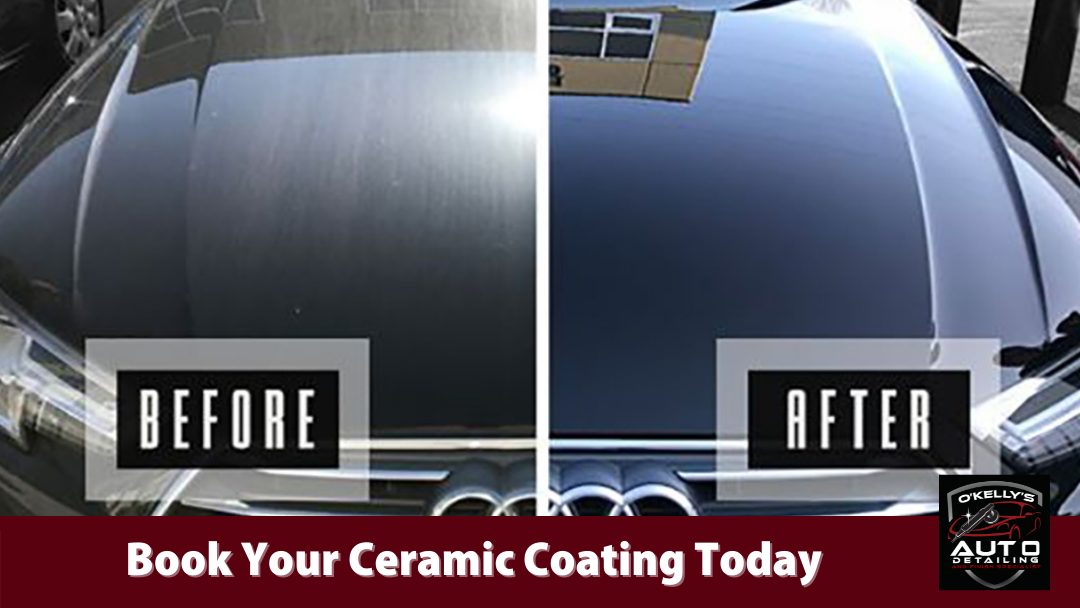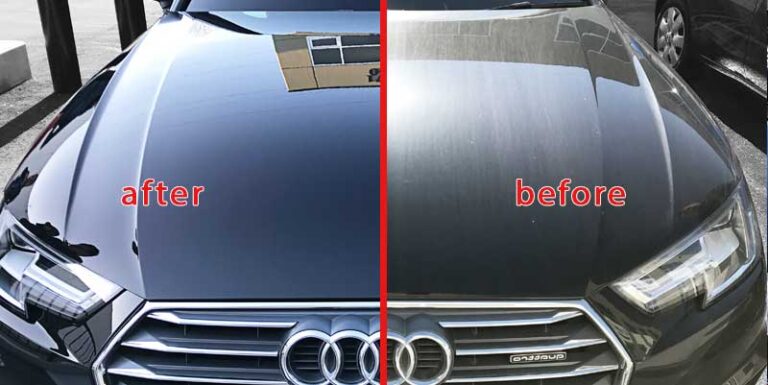The Role of Ceramic Coating Philadelphia in Stopping Scrapes and Damage
The Role of Ceramic Coating Philadelphia in Stopping Scrapes and Damage
Blog Article
Just How Ceramic Layer Offers Lasting Protection Against the Elements
Ceramic layer has emerged as a powerful remedy for securing surfaces versus diverse ecological challenges. The hydrophobic characteristics of ceramic covering even more contribute to its effectiveness by fending off water and decreasing dirt accumulation.
What Is Ceramic Covering?
Ceramic finish is a sophisticated safety solution that enhances the resilience and appearance of surfaces, specifically in vehicle applications. This ingenious modern technology consists of a liquid polymer that chemically bonds with the manufacturing facility paint of a vehicle, developing a protective layer that is dramatically a lot more resistant than typical wax or sealers.
Developed to provide durable defense versus environmental contaminants, ceramic coverings are immune to UV rays, chemical discolorations, and minor abrasions. This security assists preserve the car's aesthetic charm gradually, avoiding oxidation and fading that can arise from long term direct exposure to the aspects.
Moreover, ceramic finishings are hydrophobic, meaning they push back water and other fluids, which aids in the prevention of dust and gunk accumulation. This residential or commercial property not only makes cleaning simpler but likewise contributes to keeping the lorry's luster.
Readily available in numerous formulations, ceramic finishes can deal with different surface area materials, including glass and metal, increasing their applicability beyond simply auto uses. Generally, the adoption of ceramic covering technology represents a considerable innovation in surface area protection, offering an efficient solution for those seeking to preserve the integrity and look of their investments.
Exactly How Ceramic Finishing Works
The effectiveness of ceramic layer exists in its one-of-a-kind chemical make-up and application process. Composed largely of silica (SiO2) and various other innovative polymers, ceramic coatings create a molecular bond with the surface of the material they are related to, normally automotive paint. This bond forms a semi-permanent layer that functions as a barrier against environmental contaminants.
During application, the surface area should be thoroughly cleaned up and prepared to make sure optimum adhesion. When used, the finish goes through a curing process, which can take numerous hours to days, depending upon ecological conditions. As it cures, the finish solidifies and ends up being hydrophobic, indicating it repels water and various other substances. This property not just helps to prevent dirt buildup however additionally lessens the risk of rust and oxidation, which can degrade the surface area over time.

Benefits of Ceramic Layer
Offering a wide variety of benefits, ceramic coating serves as a phenomenal service for surface area protection. One of its main benefits is its longevity, providing a robust barrier versus ecological pollutants such as dust, UV rays, and chemical direct exposure. This durability dramatically expands the life expectancy of the surfaces it safeguards, decreasing the need for frequent repair services or substitutes.
Furthermore, ceramic layers boost aesthetics by imparting a glossy finish that keeps its shine gradually. The hydrophobic properties of these coverings fend off water, making it less complicated to clean surfaces and reducing the build-up of crud. This self-cleaning characteristic not just saves time yet also enhances the surface's total look.
In addition, ceramic coverings use resistance to scrapes and minor abrasions, safeguarding the stability of the hidden products. This is particularly beneficial for auto applications, where preserving an excellent exterior is necessary for resale value.

Contrasting Ceramic Finishing to Typical Techniques
Often, people look for efficient services for surface area security, motivating a contrast between standard approaches and ceramic finishings such as wax or sealants. Standard choices like wax give a short-term layer of security, usually lasting a few weeks to a couple of months, relying on environmental conditions and automobile use. While wax can enhance luster and supply a barrier against contaminants, its effectiveness diminishes swiftly, calling for constant reapplication.
In comparison, ceramic layers offer a more durable remedy, creating a strong, chemically bonded layer that can withstand for a number of years. This long-lasting security substantially minimizes the requirement for regular try these out upkeep, enabling automobile owners to delight in a constantly refined look without the headache of constant applications. Ceramic layers are additionally a lot more resistant to UV rays, chemicals, and physical abrasions, thus supplying remarkable protection versus the elements.
While typical approaches could be more obtainable and cheaper at first, the longevity and performance of ceramic layers offer a compelling situation for those looking for comprehensive surface area security. Eventually, the selection between standard approaches and ceramic finishings depends on private concerns, such as time, budget, and desired level of protection.
Maintenance Tips for Durability
Recognizing the differences between ceramic coatings and conventional techniques highlights the significance of appropriate upkeep to optimize the durability of ceramic layers. Ceramic Coating Philadelphia. To ensure the efficiency of ceramic finishings, normal treatment is necessary
First, always clean the covered surface with pH-balanced vehicle hair shampoos. Stay clear of unpleasant materials or rough chemicals, as they can deteriorate the finishing. A gentle hand laundry with microfiber towels minimizes the threat of scratches.
2nd, consider making use of an upkeep spray created particularly for ceramic finishes. Ceramic Coating Philadelphia. This can enhance hydrophobic residential or commercial properties and add a layer of security, ensuring the layer stays effective over time
Third, avoid automatic auto cleans that use brushes, as they can wear down the finishing. Rather, choose for touchless laundries or hand washing whenever possible.
Lastly, periodic inspections for any indications of damage or wear are crucial. Resolving problems without delay can protect against extra extensive damage and maintain the coating's honesty.

Conclusion
In recap, ceramic finish supplies a formidable service for securing surface areas from environmental challenges. By comparing it you could try this out to traditional safety approaches, the supremacy of ceramic finish ends up being obvious, making it a preferred choice for long-lasting surface protection.
Recognizing just how ceramic finishings work is crucial in valuing their duty in surface area security.
Providing a multitude of advantages, ceramic coating offers as an extraordinary service for surface defense.Often, individuals seek effective services for surface protection, prompting a contrast in between traditional approaches and ceramic finishes such as wax or sealers.In summary, ceramic finishing provides a formidable remedy for safeguarding surface areas from environmental challenges. By contrasting it to standard protective methods, the prevalence of ceramic covering comes to be obvious, making it a preferred selection for resilient surface area protection.
Report this page